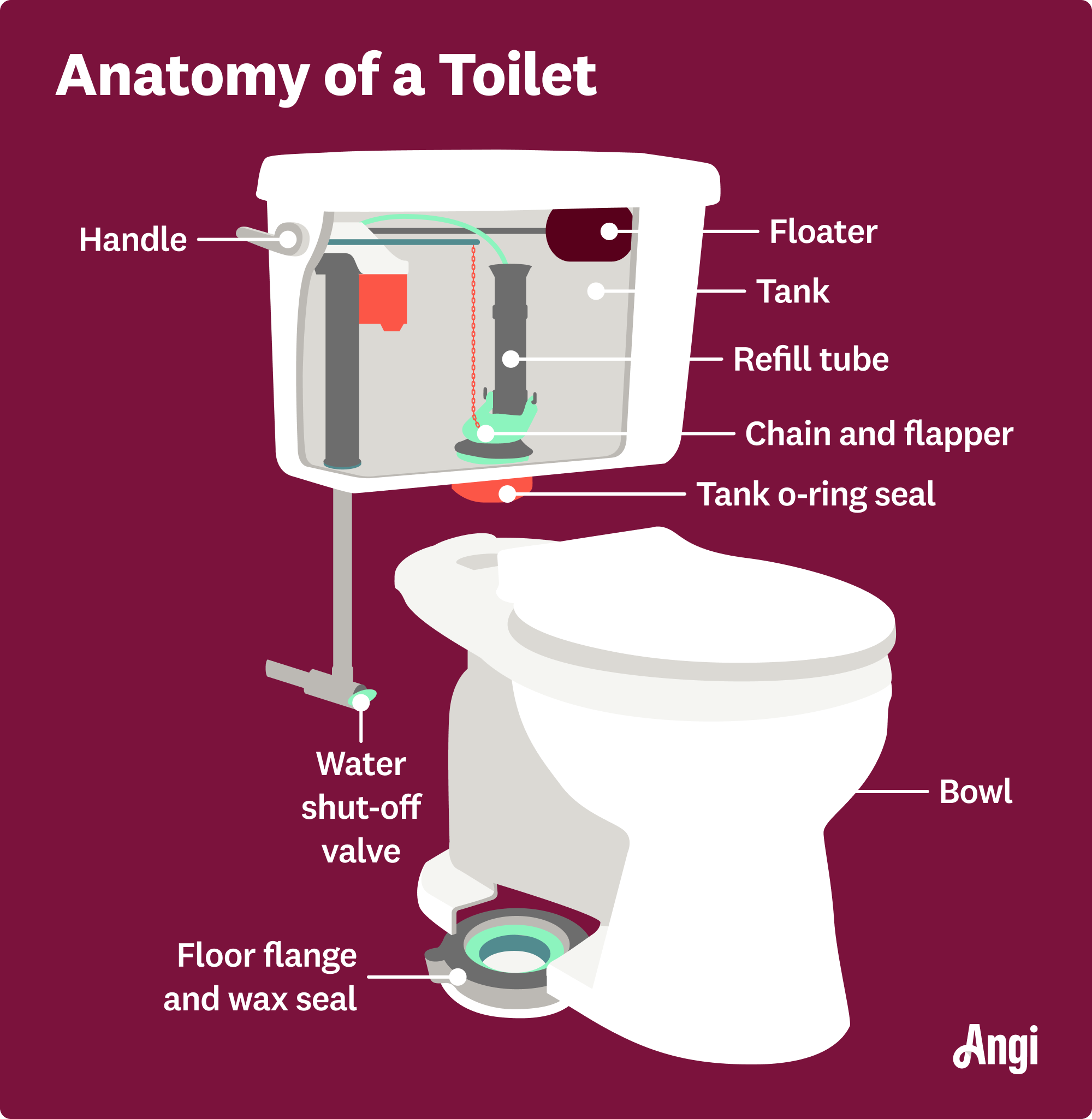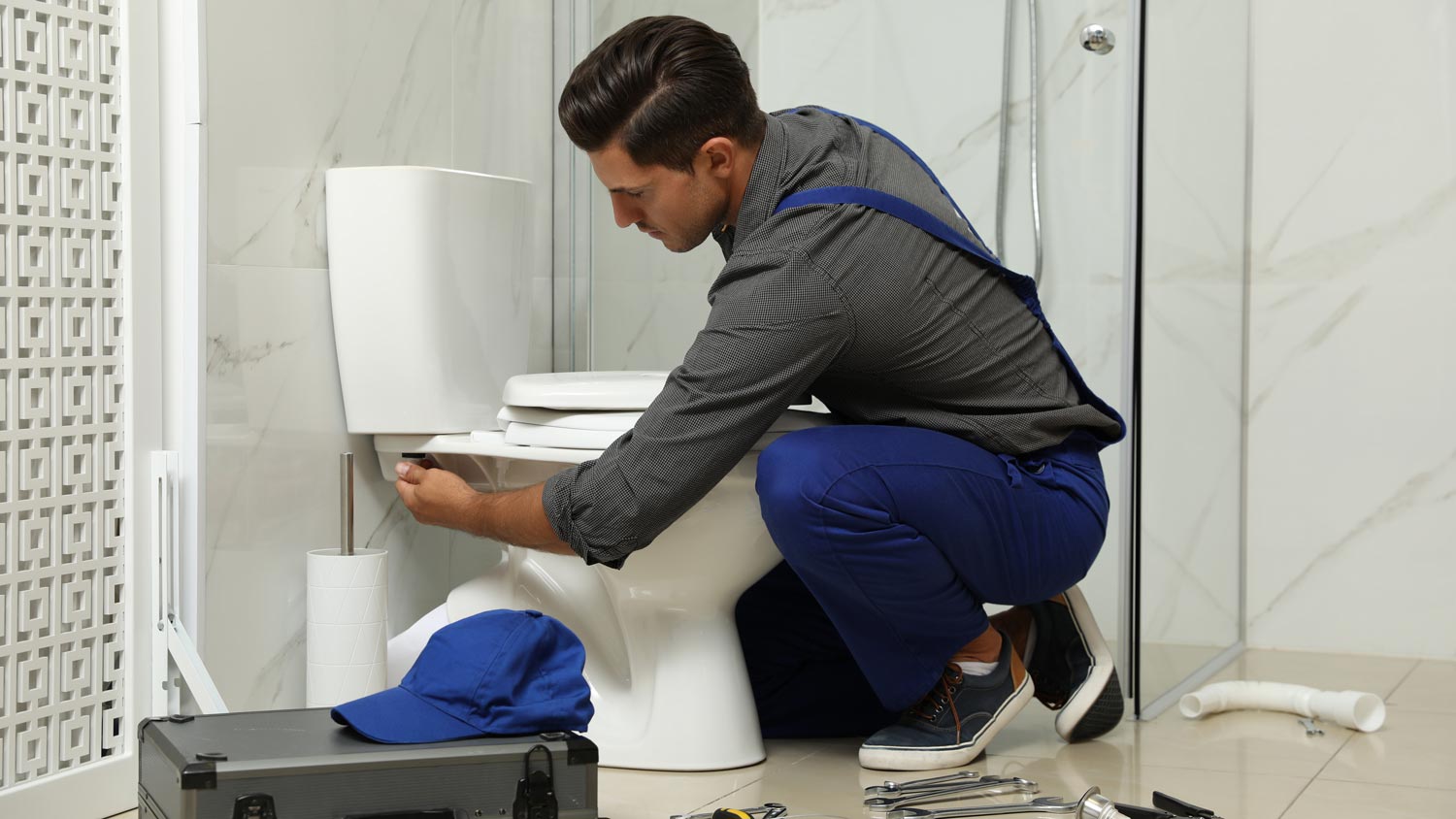
We’ll cover the cost of replacing a shower or bathtub drain, whether you can tackle this repair yourself, and what other projects to consider along the way.
Read this and you’ll be ‘flushed’ with knowledge


The toilet bowl includes a C-shaped trap that carries away waste.
The toilet tank boasts multiple parts, such as the chain, the flapper, and a refill tube.
A handle or button connects to the interior of the tank, instigating a flush.
The floor flange, wax seal, and water supply shut-off valve reside at the base.
Can you imagine what our lives would be like without the humble home toilet? These fixtures are the centerpiece of most bathrooms, happily transporting unsavory liquids and solids to a waste facility somewhere far, far away. Out of sight, out of mind, right? However, toilets are deceptively complex, with several key components. Before fixing common toilet problems, learn about these various parts to become better acquainted with the porcelain thrones in your home.

The toilet bowl is the large base you sit on while staring at your smartphone or perusing a stack of magazines. This bowl features an oblong or round hole at the bottom for waste, and toilet bowls include a C-shaped internal trap that carries this waste away. This trap also keeps a small reverse of water at the bottom to stop sewer gases from escaping into your home. Most toilet bowls are made of vitreous china, which is both waterproof and highly stain-resistant.
The floor flange, otherwise known as the closet flange, sits under the toilet bowl and above the sewer pipe that protrudes from the floor. This flange is securely attached to the floor with screws or bolts and works to keep the toilet affixed to the ground.
The wax seal sits atop the floor flange and helps prevent water from leaking all over the ground as you use the toilet. Pros regularly replace these seals as part of a general maintenance visit, as they crack and leak over time.
The upper part that connects to the top of the toilet bowl is called the toilet tank. The water in the tank flows into the bowl when you flush the toilet. This tank includes the float, the chain, the flapper inside the chamber, and the toilet handle on the exterior.
Made of porcelain, these solid-state fixtures include no real moving parts, so they rarely encounter repair issues. However, be on the lookout for hairline cracks that lead to leaks. If the tank cracks, hire a local plumber or repair it yourself with epoxy.
The tank O-ring seal, otherwise known as the mack washer or tank-to-bowl gasket, is the large O-shaped washer that sits between the bottom of the toilet tank and the top of the toilet bowl. This gasket is typically rubber or wax and works to prevent water from leaking out of the tank.
If you experience a leak at the bottom of the tank, a poorly installed or cracked O-ring is likely the culprit. To fix this issue, empty the tank, open it up, and replace the O-ring with a brand new one.
These components regulate the water level inside the tank. Water rises to match the height of the float ball. If a float ball is too high in the tank, the toilet overflows or runs constantly. If too low, water struggles to fill the tank, leading to mold growth and bacteria.

The toilet chain, or lift chain, rests in the tank and connects to the toilet flapper. When a person flushes the toilet, the chain lifts the flapper to send water into the bowl. This flapper is a rubber stopper located in the base of the toilet tank—it operates similar to a rubber stopper in a bathtub.
These components engage with every flush, making them susceptible to maintenance issues. Luckily, flapper repair kits include replacement chains, which means they are a DIY-friendly all-in-one solution.
The final major tank-based component is the refill tube. This flexible plastic tube rests in the center of the toilet tank and trickles water into the toilet bowl as the tank refills. This modest amount of water remains in the bowl after flushing and protects against sewer gasses entering your home.
These plastic tubes will leak and crack over time, but it’s an easy fix. Simply purchase a refill tube repair kit from the local hardware store and follow the installation instructions.
We’re all familiar with the toilet handle (though some modern toilets feature a push-button design). Located on the exterior of the tank or toilet lid, this is the lever or large button used to flush the toilet. Some models include two buttons or levers, one for liquids and another for solid waste. The handle or button connects to a long arm that extends into the tank, eventually leading to the chain and flapper. The handle and arm are a single piece, so if one fails, you’ll need to replace both parts at the same time.
As the name suggests, the water supply shut-off valve is an oblong-shaped knob that controls access to a home’s main water line. This valve is handy when conducting repairs or replacements, as it eliminates any chance of a flood or a leak. However, the access knobs are not the most durable components ever made and they break if they’re old or mishandled. Luckily, the cost to replace a shut-off valve is inexpensive and can be done in a few minutes.
From average costs to expert advice, get all the answers you need to get your job done.

We’ll cover the cost of replacing a shower or bathtub drain, whether you can tackle this repair yourself, and what other projects to consider along the way.

Plumbing inspection costs depend on the issue you’re looking into and the size of your home. Learn what you can expect to pay.

Whether you’re changing your home’s floor plan in a remodel or just replacing old, worn-out plumbing, this guide will help you estimate the cost of repiping a house.

Range hood dripping water? You may have damaged flappers or need more insulation. Find out what’s causing the problem and call the right professional to fix it.

Severe winter weather causes well water pipes to freeze, obstructing water flow and leading to pipe bursts. Here’s what to do if your well water is frozen.

Read how to properly vent your toilet, sink, and shower and learn the importance of effective plumbing ventilation to ensure a well-functioning and odor-free bathroom.